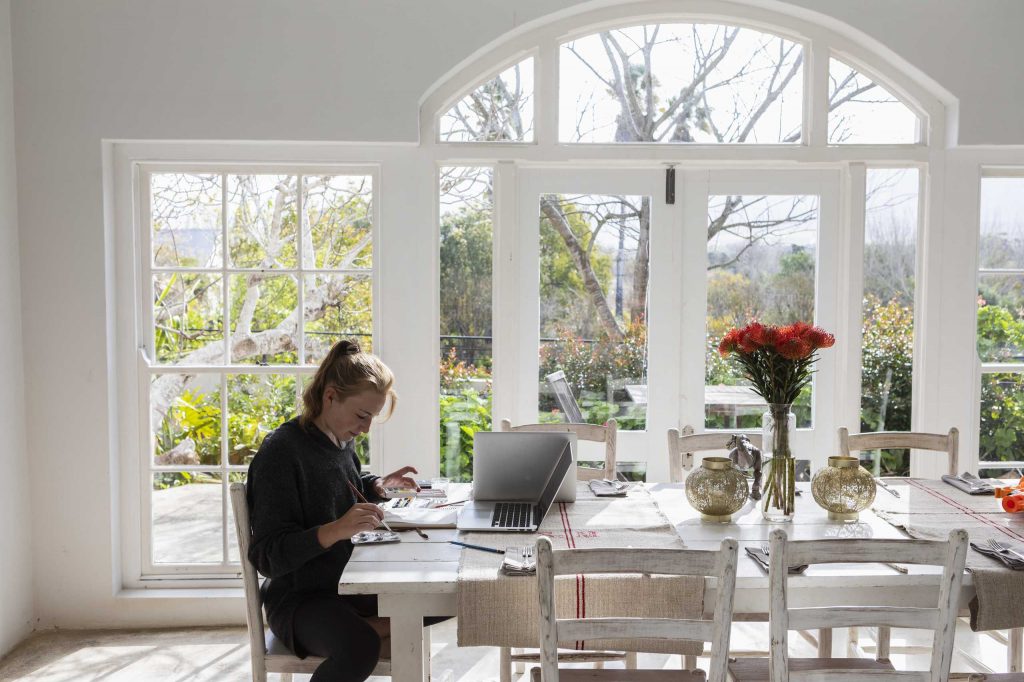We often think of interior design as something visual — colors, furniture, style choices. But what if your home’s design could do more than just look good? What if it could actually shape how you live — how you focus, how you rest, how you feel each day?
For many people today, home is no longer just a retreat — it’s also the office, the creative studio, the place for meetings, deadlines, brainstorming, and burnout. And when those lines blur, so can your energy and peace of mind.
Designing your home to serve both your working and resting selves is not a luxury — it’s a quiet revolution in how we live. Let’s look at how and why.
1. The Balance We All Need — and Rarely Get
You wake up and your desk is three steps away from your bed. You open your laptop and dive into work… before you’ve even had coffee. There’s no boundary between “on” and “off,” and over time, that constant proximity to work creates fatigue that no weekend can fix.
Now imagine instead:
You start your day by moving into a defined, energizing space. There’s natural light by your desk. A plant nearby. A good chair. A divider between your workspace and the rest of the room. It’s simple, but it signals: this is work mode.
Later, when you step away, you don’t collapse onto the same couch you stared at all day. You have a cozy corner with dimmed lighting and soft textures that helps you mentally disconnect.
These transitions — small, physical, visual — are how you reclaim balance in the same square meters.
2. Space Shapes State of Mind
Most of us don’t realize how deeply our environment affects us until we change it.
- A cluttered corner increases cognitive load.
- A dark workspace lowers motivation.
- A bedroom with visible work tools creates anxiety — even during rest.
Now reverse that.
- A workspace bathed in daylight tells your brain it’s time to focus.
- A clearly zoned rest area lets your body truly relax.
- Intentional lighting, textures, and layouts reduce mental noise.
This is not about buying expensive furniture or following trends — it’s about aligning your space with your daily rhythm.
When your home flows with your life, you stop fighting it. Your attention sharpens. Your rest deepens.
3. Small Adjustments. Big Shifts.
You don’t need a big renovation. What you need is intentional change.
Let’s say your desk faces a wall and you feel blocked. Try turning it toward a window, or adding a vision board to shift the energy.
Your “relaxation corner” might be a simple armchair, but if you add a small lamp and a warm throw, suddenly it becomes an invitation to unwind.
You can transform your home one micro-zone at a time:
- Create visual boundaries between zones with rugs or curtains.
- Use shelving units to separate work and living areas.
- Add color cues: cool tones for focus, warm tones for rest.
- Build rituals through lighting — brighter for work, softer for calm.
It’s not about square footage. It’s about how space feels — and how it helps you function.
4. The Science Behind It
This isn’t just a design trend. It’s supported by neuroscience, psychology, and behavioral studies.
Zoning reduces cognitive dissonance. Your brain prefers clear roles and environments.
Biophilic design — including natural light, greenery, and organic materials — reduces stress and enhances productivity.
Color psychology affects emotion and behavior, influencing how calm or alert you feel.
Design is more than décor — it’s a tool to shape habit, energy, and well-being.
5. Why This Course Was Created
Work-Life Home Design was born from a simple question:
How can we make homes feel like they support us — not drain us — in every part of life?
We saw people burned out at the kitchen table, working in bedrooms, resting in living rooms that never quite felt restful. We saw the emotional wear of a space that doesn’t adapt to your needs.
So we built a course that’s:
- Practical and visual — no fluff, just tools that work
- Adaptable to any home size or layout
- Focused on both functionality and emotional comfort
- Designed to help you rediscover what home can be
You’ll learn to map zones, use light and flow strategically, and make your home work for you — not against you.
Final Thought
You don’t need more space. You need space that works smarter.
When your home is designed for balance, life flows better — work feels clearer, rest feels deeper, and the boundary between the two finally starts to make sense.
This isn’t just a style update. It’s a life upgrade.

